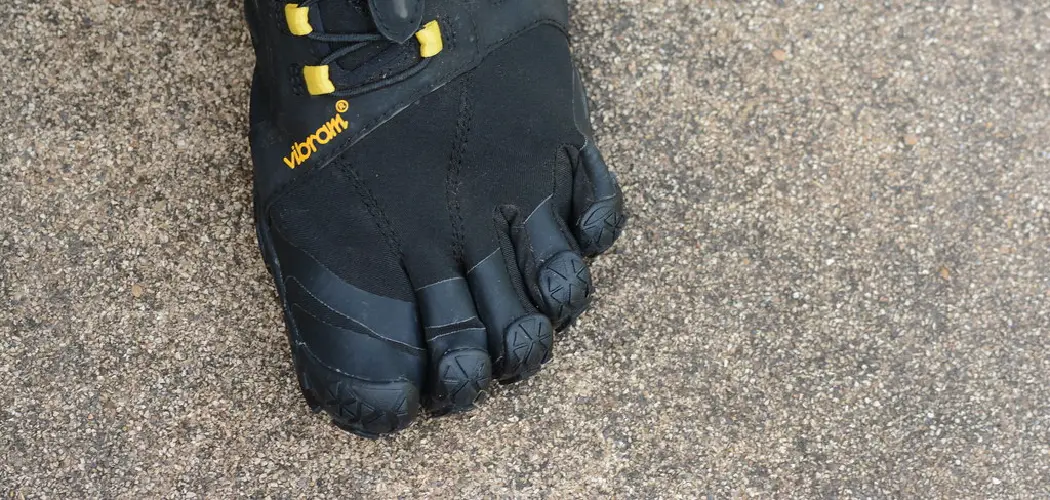Barefoot shoes provide many benefits that regular shoes can’t. They allow your feet to move more freely, let you experience your body’s natural movement, and help strengthen foot muscles and tendons. Transitioning to barefoot shoes can be a great choice for those who want improved posture, balance, agility, strength, and mobility and reduce their risk of injury.
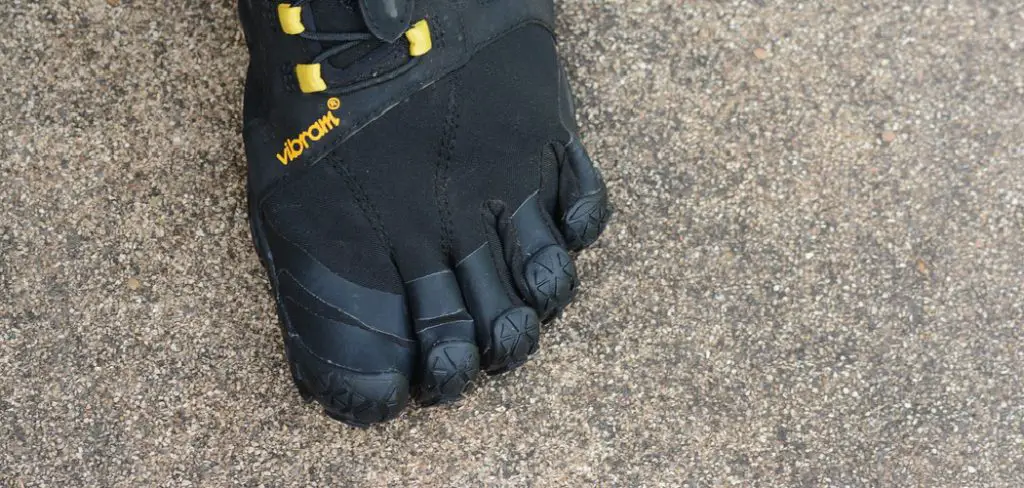
When transitioning to barefoot shoes, there are several advantages. One of the main benefits is improved posture and balance. The lack of arch support in barefoot shoes forces your feet to work harder to maintain proper posture, which in turn strengthens your legs and core muscles.
Additionally, because you have more contact with the ground, it is easier for your body to sense changes in terrain and adjusts accordingly, improving balance. In this blog post, You will learn in detail how to transition to barefoot shoes.
Step-by-Step Processes for How to Transition to Barefoot Shoes
Step 1: Inspect Your Feet
Before you start transitioning to barefoot shoes, check your feet for any irregularities or conditions that may be sensitive to the reduced padding and support of barefoot shoes. Consult a podiatrist if necessary before proceeding.
Step 2: Choose the Right Shoes
The success of your transition to wearing barefoot shoes will depend on finding the right type of shoe for your needs. Look for shoes with a minimal design that includes toe protection, flex points, and enough room to move your toes. When you first start wearing barefoot shoes, begin by wearing them in short intervals. This will help your feet develop a tolerance to the new experience.
Step 3: Increase Wear Times As Comfort Increases
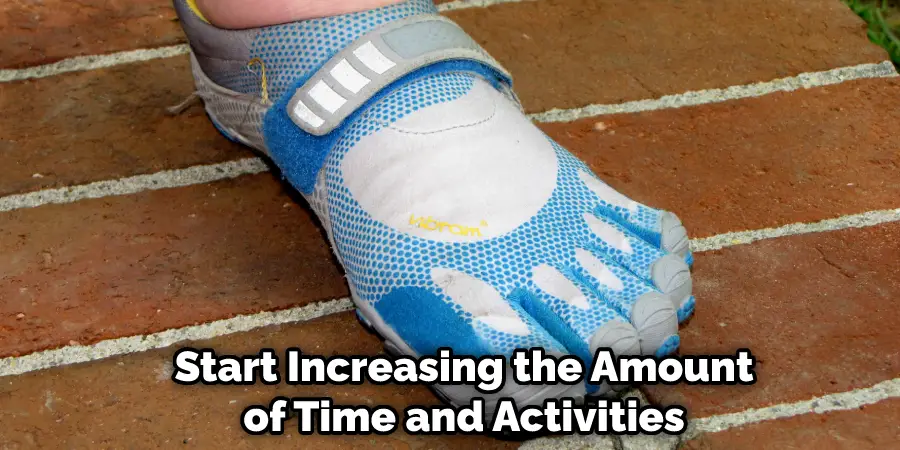
Once you are comfortable walking in barefoot shoes, start increasing the amount of time and activities done while wearing them. This could include running,, and other activities that place additional strain on your feet.
Remember to take off your barefoot shoes from time to time and allow your feet to rest. This will help keep the skin on your feet healthy, reduce excessive wear and tear, and prevent possible injury.
Step 4: Strengthen Your Feet
Regularly perform exercises that target the muscles and tendons of your feet. These can include toe and arch stretches, towel curls and other targeted exercises. Be aware of what your feet are telling you. If they feel uncomfortable or sore, take a break from wearing barefoot shoes until the discomfort subsides. This can include adding additional cushioning, using different lacing techniques, and other modifications.
Step 5: Attentively Care for Your Feet
Make sure to keep your feet clean and dry at all times and inspect them regularly for signs of wear or injury. Don’t be discouraged if the transition to barefoot shoes feels difficult at first. Remember that consistency is key and that your feet will adapt to the new experience over time.
Safety Tips for How to Transition to Barefoot Shoes
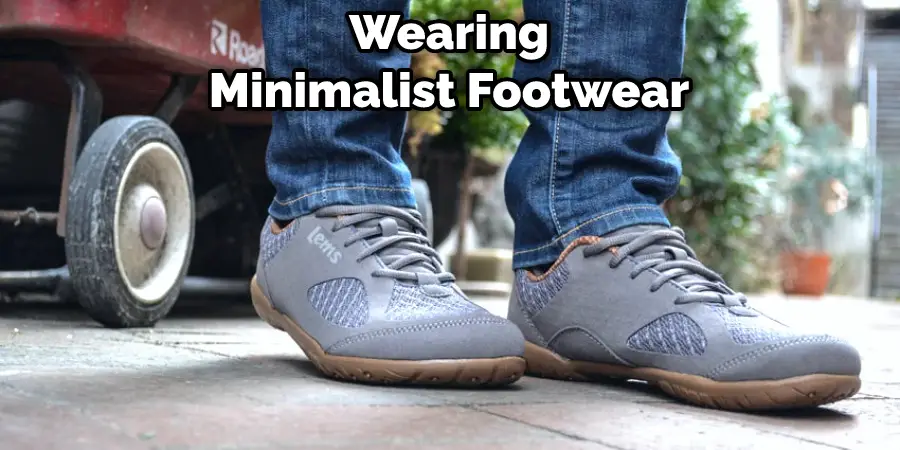
- Before completely switching to barefoot shoes, transition by wearing minimalist footwear that still provides some cushioning and support, and gradually increase the length of time you wear your barefoot shoes each day so your feet can get used to them.
- Pay attention to any new aches or pains when wearing your barefoot shoes. If you feel any pain, stop wearing the shoes and give your feet time to heal before trying again.
- When transitioning to barefoot shoes, getting used to standing and walking on uneven ground is important since most traditional footwear provides more cushioning and support.
- Make sure your shoes are the right size and snug enough so that they don’t slip around on your feet but are not too tight that it causes discomfort.
- Incorporate foot-strengthening exercises into your daily routine to help strengthen foot muscles and ligaments as you transition to barefoot shoes.
- Keep an eye on the condition of your feet when wearing barefoot shoes, and look for any signs of blistering, scratches, or cuts.
- Everyone’s feet are different, so it’s important to listen to your body and pay attention to how you feel when wearing barefoot shoes. If your feet are feeling uncomfortable, take a break and give them time to rest before trying again.
By following these safety tips, you can transition to barefoot shoes in a safe and healthy way.
How Long Does It Take an Average Person to Transition Successfully to Barefoot Shoes?
The time it takes to transition to barefoot shoes depends on several factors, such as the amount of cushioning and support your current shoes provide, the type of arch you have, and how quickly your feet can adjust to being in a new environment.
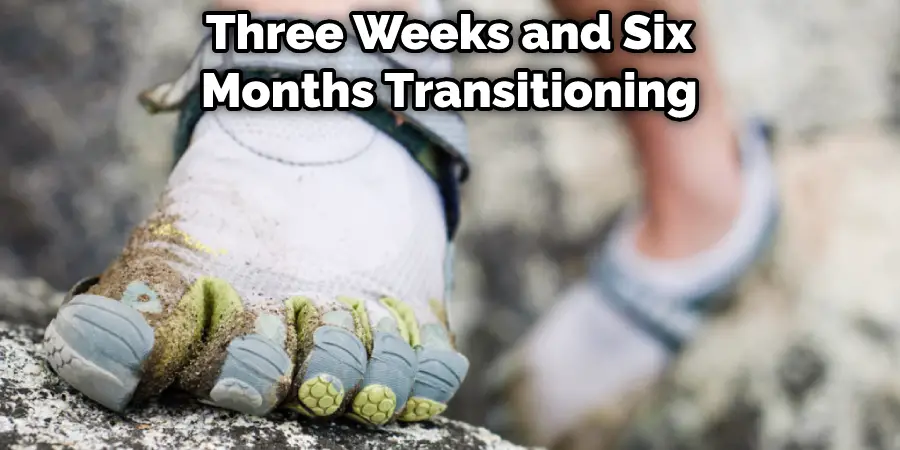
On average, people can expect to spend between three weeks and six months transitioning to barefoot shoes. Some people find the transition much more difficult than others, but most can successfully make the transition with patience and dedication.
The biggest challenge when transitioning to barefoot shoes is learning how to walk correctly in your new footwear. This means slowly strengthening the muscles in your feet so that you don’t over-strain them or cause any injuries. During the transition, it’s important to start off slow and gradually build up the intensity of your workouts. As a general rule, never increase the intensity or duration of your workouts by more than 10 percent each week.
What Are the Potential Risks Associated With Transitioning to Barefoot Shoes Too Quickly?
Transitioning to barefoot shoes too quickly can cause short-term and long-term problems. Some of the potential risks include:
- Injuries, such as sprains, strains, and other musculoskeletal injuries, from overloading the body with activities that it is not yet used to.
- Excessive stress on the muscles and connective tissues in the foot, heel, leg, and back. This can cause pain or discomfort due to conventional shoes’ lack of cushioning and support.
- Increased risk for developing plantar fasciitis and Achilles tendonitis are common injuries associated with barefoot running and walking.
- An inability to adjust to barefoot shoes’ new biomechanical stresses on the body leads to potential falls or other accidents.
- Increased risk of infection from cuts and scrapes and increased exposure to pathogens in surfaces that are more likely to be encountered while wearing barefoot shoes.
For these reasons, it is important to make a gradual transition when switching to barefoot shoes. Start by wearing them for shorter distances and shorter amounts of time as you get used to the different feel and movements required for this type of shoe.
Are There Any Long-term Benefits Associated With Transitioning to Barefoot Shoes?
Yes, there are several long-term benefits associated with transitioning to barefoot shoes. Going barefoot can help your body become strong and more balanced naturally.
Your feet will be able to move properly and in the right way, helping you avoid injuries and allowing for a much better posture overall. Moreover, research suggests that going barefoot can help improve balance and proprioception, reducing the risk of fall injuries.
Another major benefit that comes with transitioning to barefoot shoes is improved alignment and better utilization of muscles. Since you no longer have a cushion between your feet and the ground, your body will be forced to use more of its own muscles for stability.
As a result, you will likely increase the strength and tone of your legs and feet muscles. Finally, going barefoot can help strengthen your feet’ joints, leading to better flexibility and mobility overall. In fact, studies have shown that people who go barefoot tend to have better foot mechanics than those who wear shoes with cushioning.
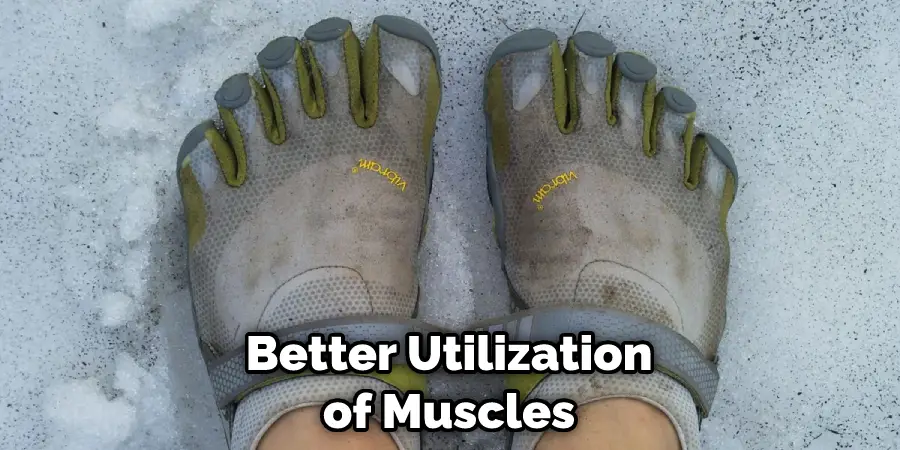
Are There Any Potential Health Risks Associated With Transitioning to Barefoot Shoes Too Quickly?
Although barefoot shoes can provide numerous health benefits, it is important to note that transitioning too may be associated with certain risks. Since the feet and calves are not used to the increased mobility and support offered by barefoot shoes, making a sudden switch can put extra strain on these muscles.
Additionally, overly-rigid or thin soles can lead to pain or discomfort – especially if your feet are not accustomed to the extra sensation.
To avoid these potential health risks, it is important to transition slowly and methodically when making the switch from traditional shoes to barefoot shoes. If possible, begin by wearing your new minimalist footwear for shorter periods of time (about 20 minutes) and gradually increase your wear time over the course of several days or weeks.
Additionally, it is important to make sure that you are purchasing well-made shoes with enough cushioning and flexibility for your feet.
Conclusion
The main disadvantage of transitioning to barefoot shoes is that it can take some time to get used to. Even those who are experienced with running in minimal footwear may struggle the first few they transition to full “barefoot” shoes. It takes time for your feet and legs to adjust, so you might experience some level of discomfort and soreness.
In conclusion, transitioning to a barefoot shoe is a great way to improve your overall foot health. It can help you become more in tune with the way you move and provide cushion and protection from the elements that shoes lack.
Plus, plenty of options are available for those who want to go completely minimalist or just find better support for their feet. I hope this article has been beneficial for learning how to transition to barefoot shoes. Make Sure the precautionary measures are followed chronologically.

